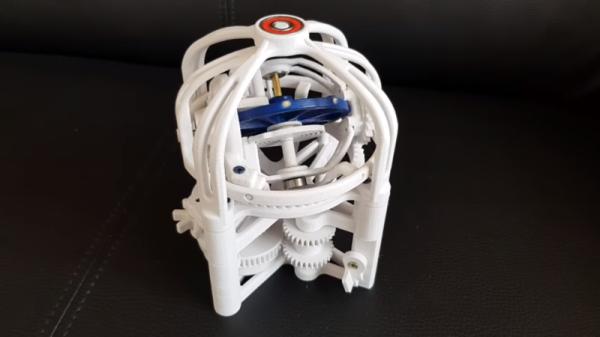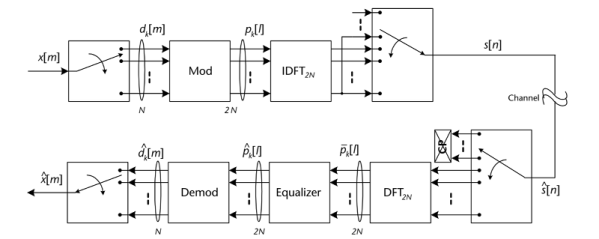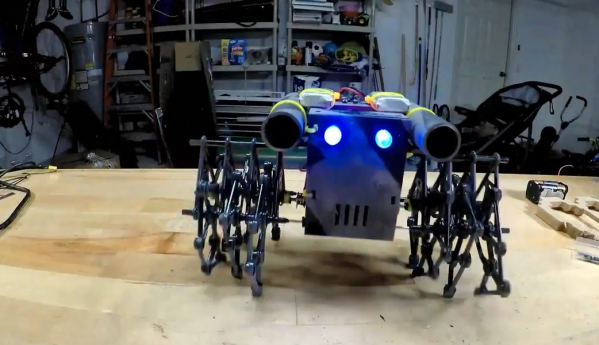Clock movements are beautifully complex things. Made up of gears and springs, they’re designed to tick away and keep accurate time. Unfortunately, due to the vagaries of the universe, various sources of error tend to creep in – things like temperature changes, mechanical shocks, and so on. In the quest for ever better timekeeping, watchmakers decided to try and rotate the entire escapement and balance wheel to counteract the changing effect of gravity as the watch changed position in regular use.
They’re mechanical works of art, to be sure, and until recently, reserved for only the finest and most luxurious timepieces. As always, times change, and tourbillions are coming down in price thanks to efforts by Chinese manufacturers entering the market with lower-cost devices. But hey – you can always just make one at home.
That’s right – it’s a 3D printed gyrotourbillion! Complete with a 3D printed watch spring, it’s an amazing piece of engineering that would look truly impressive astride any desk. All that’s required to produce it is a capable 3D printer and some off-the-shelf bearings and you’ve got a horological work of art.
It’s not the first 3D-printed tourbillion we’ve seen, but we always find such intricate builds to be highly impressive. We can’t wait to see what comes next – if you’re building one on Stone Henge scale for Burning Man, be sure to let us know. Video after the break.
[Thanks to Keith for the tip!]
Continue reading “Gyrotourbillion Blesses The Eyes, Hard To Say”



















